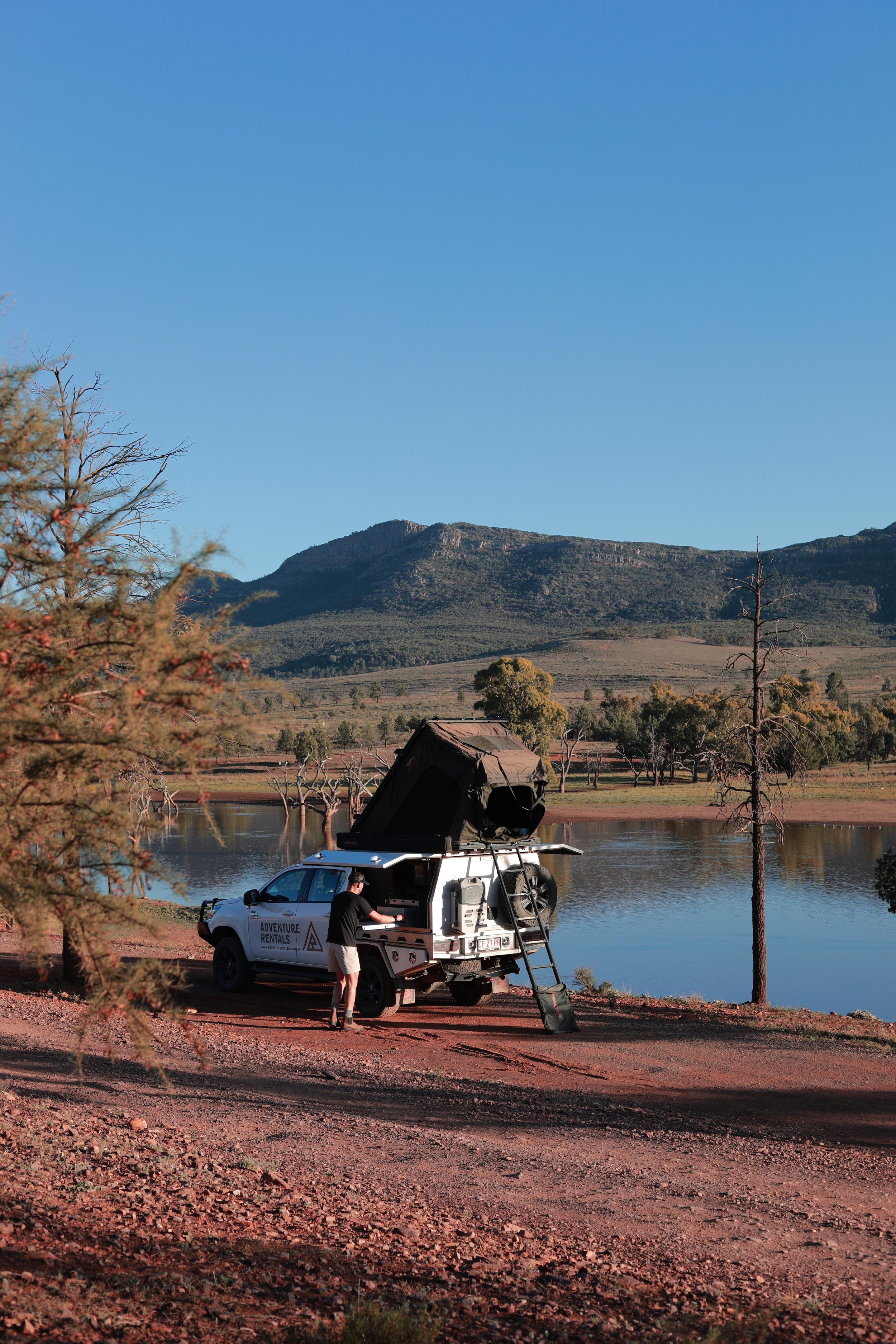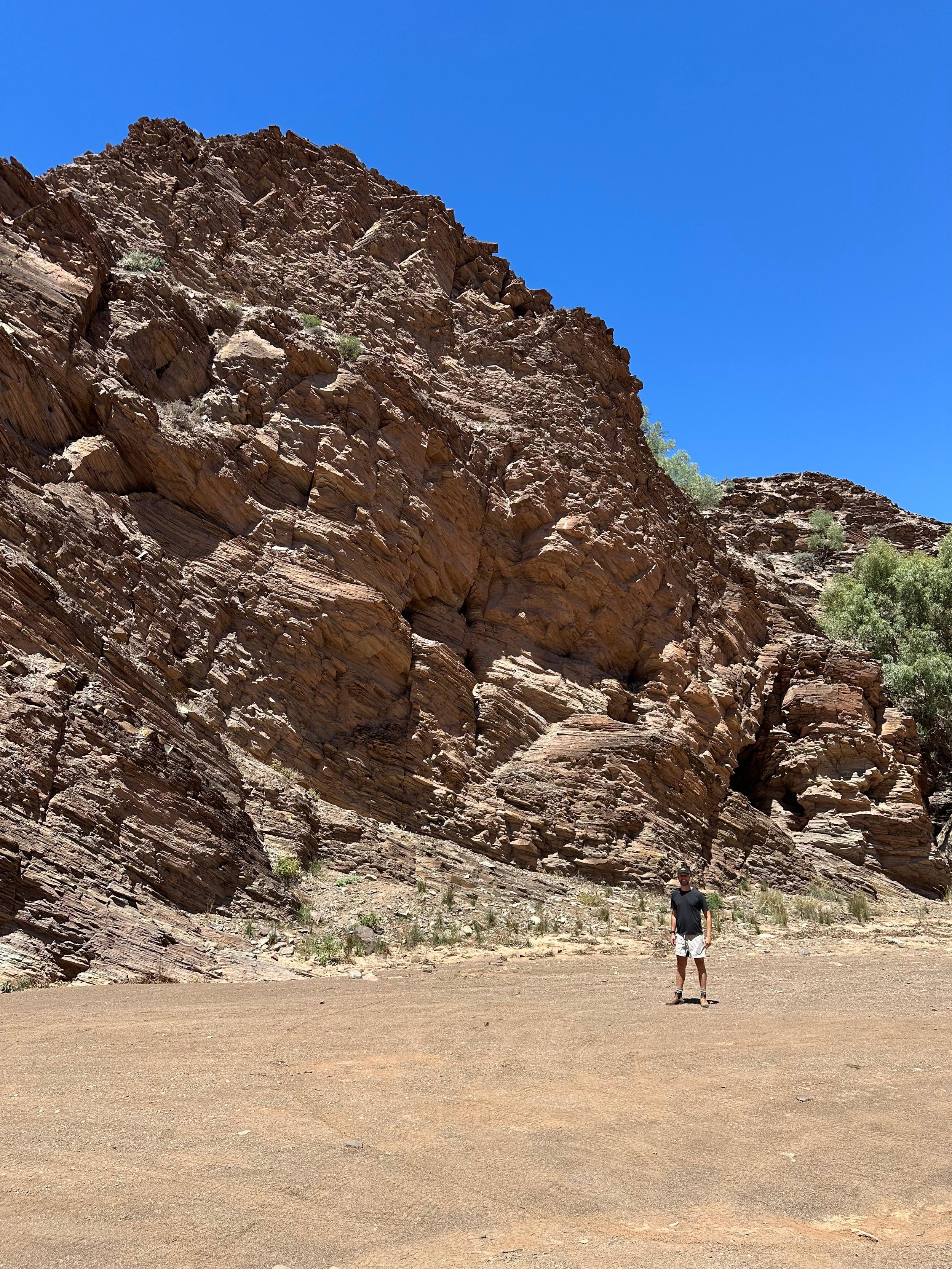Emus, red dirt and ancient fossils
Dawn in the Flinders Ranges, and the rising sun is painting Rawnsley Bluff in a honey-hued orange; the raucous Little Corellas - who have twigged, from the same routine yesterday, that we will soon be cooking breakfast - have taken up residence in a nearby tree. Aside from their calls, all we can hear is the sound of the wind through the trees; the air becoming a message board for all those that live in the Ranges - emus, kangaroos and goats, who meet around the watering hole each day.
It’s day 2 of our road trip across South Australia, and I unzip the opening of our rooftop tent to the blazing morning sun, bleaching the outside like an overexposed photograph. Rawnsley Park Station is an active sheep station set on 29,000 acres, which was diversified by its new owners in 1985 and turned into the Flinders’ premier camping destination. We had pre-booked a fully-powered site, but part of the appeal of Rawnsley is that you can also opt for ‘bush camping’ - self-selecting a spot away from the main campsite and pitching up for the night. I may be biased, but I think we nabbed the top spot.
Earlier that day we’d picked up our hire truck, a solid and indestructible Toyota Hilux from Adventure Rentals in Adelaide. After a brief stop to stock up the onboard fridge, we made our way five hours north to the Flinders Ranges, South Australia’s largest mountain range. Roads here seemingly go on forever - straight as a die, flanked by endless arid farmland. It has been extremely dry in this part of Australia, with hardly any rain throughout 2024; the fields are bleached golden, sun-baked and wilted.
Once the dawn light has mellowed, and after a coffee made on the Aeropress and an egg and bacon bap, we head north past Wilpena Pound and turn off the sealed roads at Brachina Gorge. Home to some of Australia’s most significant geological rock formations, the Gorge dates back a staggering 500 million years. The colours change the deeper you travel in - the ochres of the rock contrasting against the terracotta red of the dirt; solid walls of geology rise high into the sky, millions of years of history contained in their craggy layers. Emus wander through at a laconic pace; the mere presence of them a symbol of another, prehistoric time.
Later, we stop in Blinman, population 28 and South Australia’s highest town. Miners travelled here from Cornwall to take up jobs in the copper mines, an incredibly hard vocation full of danger and poor conditions. The underground copper mine tour operates twice a day and walks visitors through efforts by locals to revive the mine and turn it into a living museum. While it was closed when we were there, we’re told that no trip to Blinman is complete without visiting the Miners Crib, lovingly referred to as the ‘pub in the scrub’, for a delicious feed and cold drink.
On New Year’s Eve we settle into bed before midnight, having spent the last few hours of the day watching the light fade. The sun sets around 8.30pm, half an hour later than it does at home; as it sinks below the horizon, we remind each other that ‘it usually gets better’, imploring the other not to give up on the sun’s attempt to set. It was the perfect reminder of the importance of going slow; that beautiful things cannot be rushed.
It’s our final night here before making our way down to Port Lincoln and the Eyre Peninsula for the second half of our trip. As I drift off to the sound of those rasping Little Corellas, I feel a deep sense of peace, of simplicity and ‘yutori’ - the Japanese word for unhurried spaciousness. It is endlessly beautiful here.




